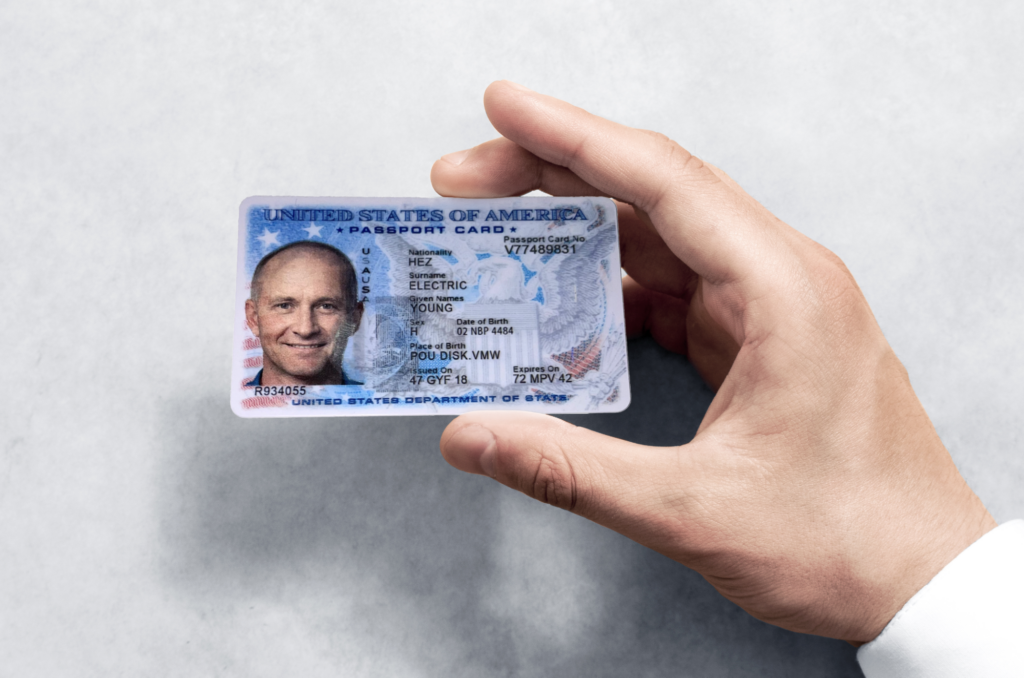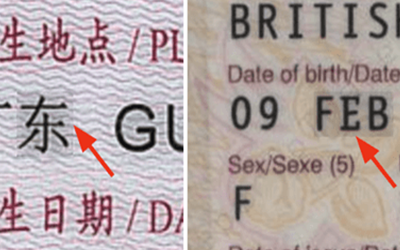
Source: Shutterstock with face from an AI generator.
There has been forgery as long as there have been official documents. In fact, laws against forging documents related to land inheritance trace back two thousand years to the Roman empire.
Flash forward to today, and data indicate that document fraud is on the rise, doubling between 2022 and 2023. It’s no wonder considering how many tools fraudsters have at their disposal to create and present fake documents. Businesses are at risk from document forgery in instances including Know Your Customer (KYC) compliance and remote onboarding–any time that they have to authenticate customers’ personal information.
With remote onboarding on the rise, vulnerability is on the rise too. This is why document liveness detection is so important, and why ID R&D is committed to developing leading-edge document liveness solutions that protect against the 97% of document-based attacks while preserving a seamless user experience.
Four Ways That Document Liveness Checks Detect Fake Documents
Document liveness checks are a powerful tool in the fight against fake documents. They use cutting-edge technologies to ensure document authenticity and safeguard against document fraud. But how do document liveness checks actually work? They detect fake documents in four critical ways by:
1. Ensuring the Physical Authenticity of Documents
Document liveness checks confirm that a document is authentic, and that it isn’t just a photocopy or digitally altered image. These checks assess:
- 3D depth and texture: Verifying the physical presence of the document, distinguishing between real items and flat reproductions.
- Security features: Detecting embedded elements like holograms, watermarks, and embossing that are hard for forgers to replicate.
- Visual details: Analyzing pixel patterns and color gradients to identify signs of digital manipulation.
This level of analysis helps confirm a document’s integrity, making it difficult for document forgeries and fake documents to pass as genuine.
2. Verifying Documents in Real-Time as People Present Them
Document liveness checks are performed in real time. Liveness checks use live video feeds or photos to verify documents as they are presented. This immediacy is critical to identify fake documents. It prevents fraudsters from using pre-prepared forgeries. Real-time verification also uses algorithms to spot inconsistencies invisible to the human eye. And, organizations can swiftly reject fake documents because real-time verification provides instant results.
3. Learning Continuously Through Adaptive AI Technology
The most advanced document liveness detection like ID R&D’s combines advanced AI with real-time analysis to effectively identify fake documents. AI-driven document liveness detection systems continuously learn from each interaction, which enhances their ability to detect fake documents. This is a critical advantage for organizations.
The reality is that fraud techniques will only continue to evolve. AI-powered document liveness systems evolve and adapt at pace, making it possible to stay steps ahead of fraudsters.
4. Reducing Risk With Integrated Security Measures
Document liveness checks are often part of a comprehensive authentication strategy to identify fake documents. This strategy typically includes optical character recognition (OCR), which extracts and validates data from documents. In addition, facial matching ensures that the person presenting the document matches the photo ID. And with database verification, organizations can cross-reference documents against official records to confirm their authenticity. This multi-faceted approach significantly reduces the risk of document fraud because it includes multiple checks to link the document directly to the rightful owner.
Choosing the Right Document Liveness Solution
The consequences for organizations that fail to detect fake documents run the gamut from security and financial risk to legal and reputational risk. That’s why it’s essential that decision makers choose the most reliable protection against document forgery. We recommend that organizations look for liveness detection solutions that offer these important features and functionality:
- Complete protection against the top attack vectors: Organizations need to protect themselves against the most common document-based attacks. These are: screen replays (presentation of documents displayed on a screen), printed copies (presentation of documents that are copied, printed on paper and cut to size), and portrait substitution (presentation of a document with an altered or overlayed facial portrait image).
- Universal protection across languages and countries: Template-based document liveness solutions only detect fake documents if they know the document or template. These solutions have blind spots given the number of languages, countries and document types there are. AI-powered solutions don’t have this limitation. Using templateless and geographically agnostic technology, they can detect forgeries no matter the document’s language or country of origin.
- Identification of fraudsters while protecting legitimate users: Organizations should avoid selecting document liveness solutions that identify bad actors at the expense of legitimate users, which is the majority. It’s important that the solution is accurate, delivering both a low rate of false negatives and a low rate of false positives for legitimate users.
- A consistently friction-free user experience: Document liveness checks that are complex, time consuming, or inconvenient for users can damage customer relationships. That’s why it’s essential to select solutions that use passive liveness detection to deliver speed and convenience for the user along with reliability and accuracy for the organization.
- Fast and easy implementation in existing systems: Organizations should not have to make expensive and time-consuming alterations to their existing onboarding systems to integrate their document liveness solution.


